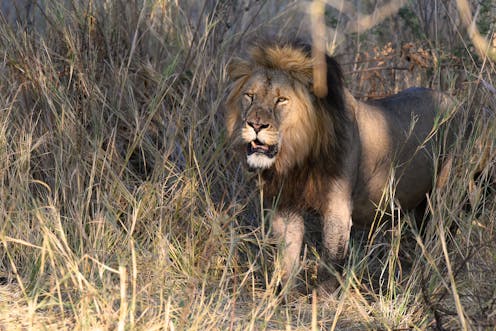
Wildlife and people are coming into more and more conflict across Africa as human populations expand. Habitat loss and fragmentation of animal populations are causing declines in species.
In Zambia, the Luangwa Valley and Kafue are two important wildlife areas. Both support populations of lion and leopard which are genetically linked to populations in neighbouring countries. They have great conservation value and are crucial for Zambia’s tourism industry too.
It was here that Paula White, director of the Zambia Lion Project at the University of California in the US, noticed something strange while researching the conservation of carnivores. Looking at the skulls of lions and leopards to estimate the animals’ ages, she saw unnatural wear marks on the teeth of these big cats. This was caused by biting and pulling on snare wire to get free. What is more, many of the lions had old shotgun pellets embedded in their skulls. They had survived these injuries – but how many more animals had not?
Behind the threat to the lions and leopards are complex social and economic issues. People move to where there are opportunities to make a living – from wildlife tourism and associated economic activity, for example. This can bring them into conflict with animals. Some people set snares because they need food, not necessarily to catch carnivores. And they may fire shotguns to drive off predators, not to kill them.
It is vital to understand the complexities of these relationships. People who live close to parks need to receive the benefits of wildlife, as our guest explains in today’s episode of Pasha.
Photo: “Portrait Of Lion Standing On Grassy Field, Kasempa, Zambia” by Stock Photo Getty Images.
Music: “Happy African Village” by John Bartmann, found on FreeMusicArchive.org licensed under CC0 1.
“Somewhere Nice” by John Bartmann, found on FreeMusicArchive.org licensed under CC0 1.
This article was originally published on The Conversation. Read the original article.







